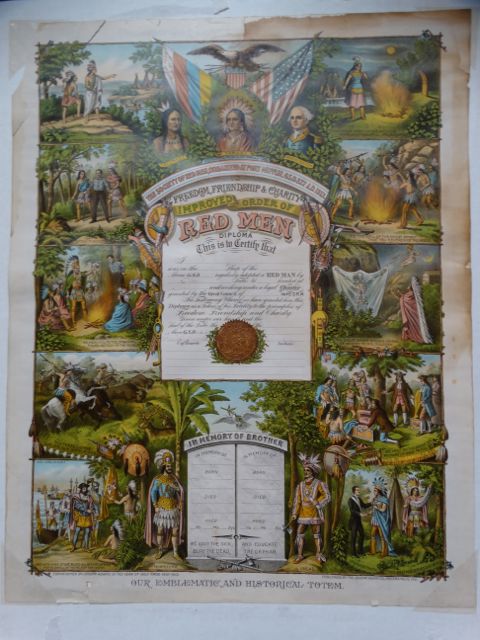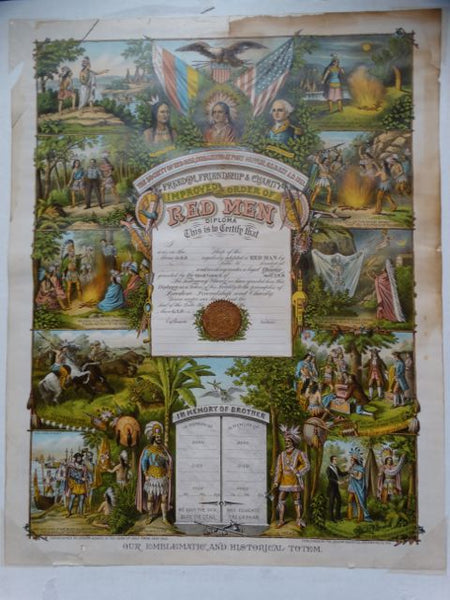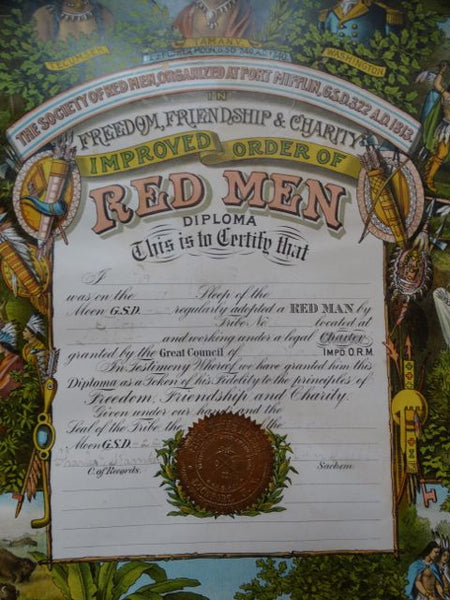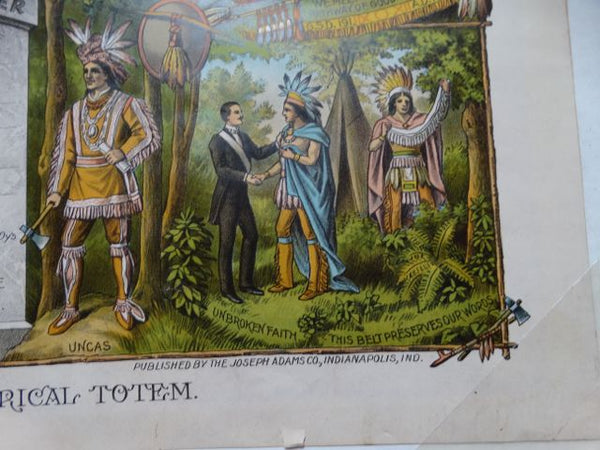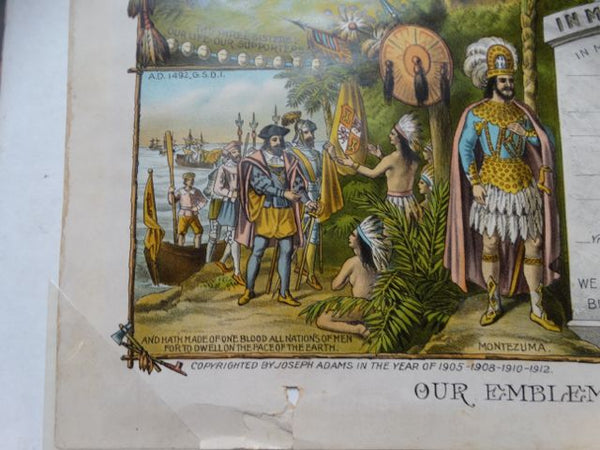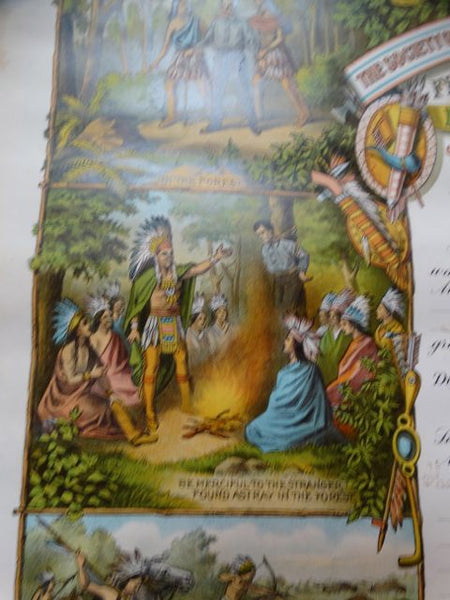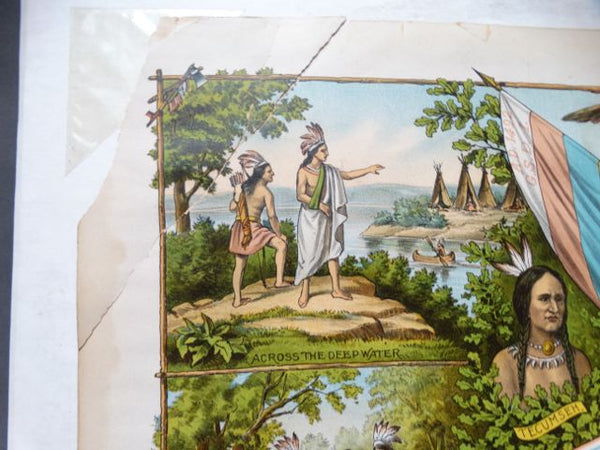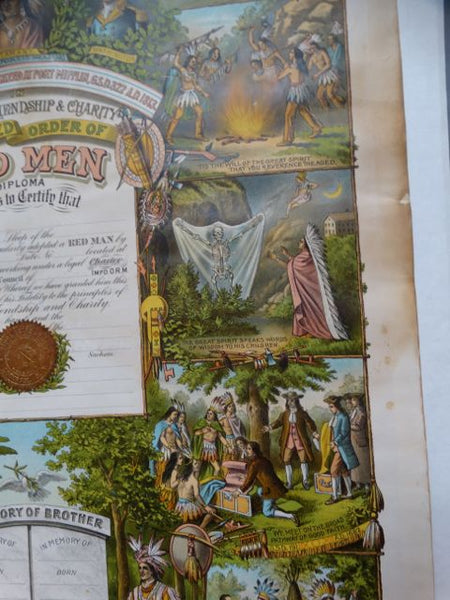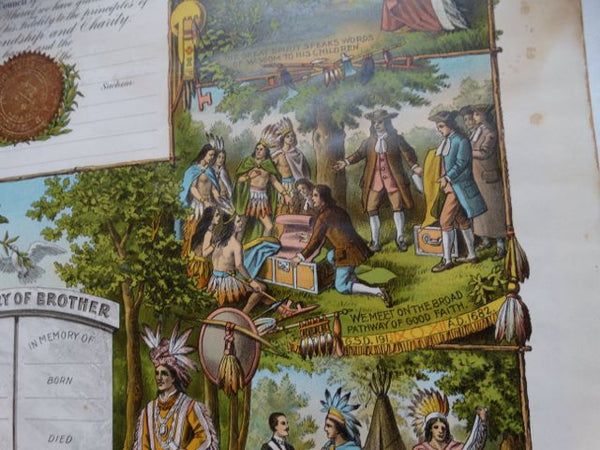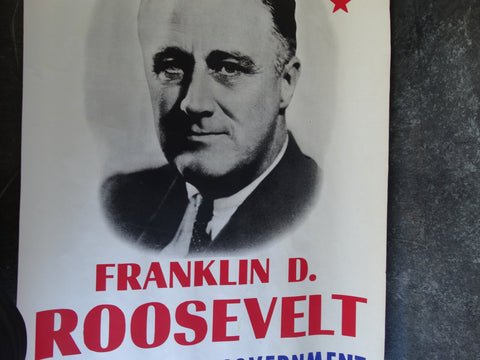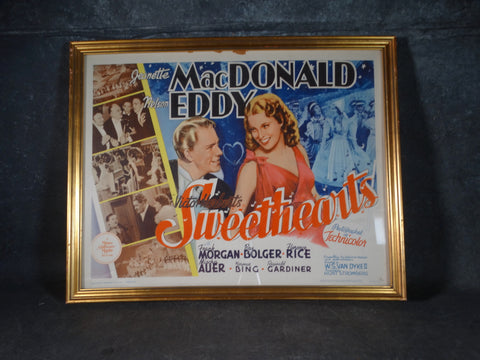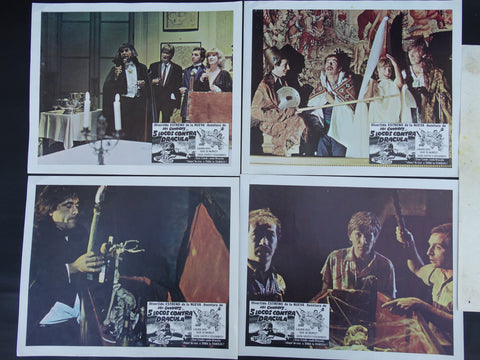Improved Order of The Red Men Diploma Certificate of Membership (Tammany Hall) Litho Poster
Anyone with any any interest in the history of American politics is going to want to get their hands on this terrific artifact. At first glance, we have a unusual piece of graphic art depicting our early romanticized engagement with the native American Indians in a colorful Litho. But what is it really? Only the key to one of America’s most powerful;l political machines, Tammany Hall!
Rare to find, this original Certificate of Membership has never been used and still has its original oak frame. Discoloration to the top right quadrant and a minor slice out of the top edge is shown. Litho Measures 21 x 28 and the frame 26 x 32.
On December 16, 1773, a group of men—all members of the Sons of Liberty—met in Boston to protest the tax on tea imposed by England. When their protest went unheeded, they disguised themselves as Mohawk Indians, proceeded to Boston harbor, and dumped overboard 342 chests of English tea. (See Boston Tea Party.)
However, for the next 35 years, each of the original Sons of Liberty and Sons of St. Tamina groups went their own way, under many different names. In 1813, at historic Fort Mifflin, near Philadelphia, several of these groups came together and formed one organization known as the Society of Red Men. The name was changed to the Improved Order of Red Men in Baltimore in 1834. In the late 18th century, social and benevolent Tammany Societies, named after Tamanend, were formed. The most famous of these was New York City’s Society of St. Tammany, which grew into a major political machine known as “Tammany Hall.” Around 1813, a disenchanted group created the philanthropic “Society of Red Men” at Fort Mifflin in Philadelphia. From this, the “Improved Order of Red Men” was an offshoot formed in 1834.
In 1886, its membership requirements were defined in the same pseudo-Indian phrasing as the rest of the constitution:
| “ | Sec. 1. No person shall be entitled to adoption into the Order except a free white male of good moral character and standing, of the full age of twenty-one great suns, who believes in the existence of a Great Spirit, the Creator and Preserver of the Universe, and is possessed of some known reputable means of support. | ” |
In one 1886 tribe, a member’s 12 cent a week dues went into a fund which was used to pay disability benefits to members at a rate of about “three fathoms per seven suns” ($3/week) for up to “six moons” (6 months) and then two dollars a week. Some medical care (“a suitable nurse”) was available, and also a death benefit of one hundred dollars. The fund was invested in bonds, mortgages, and “Building Association Stock”. Meetings were weekly on Friday nights.

